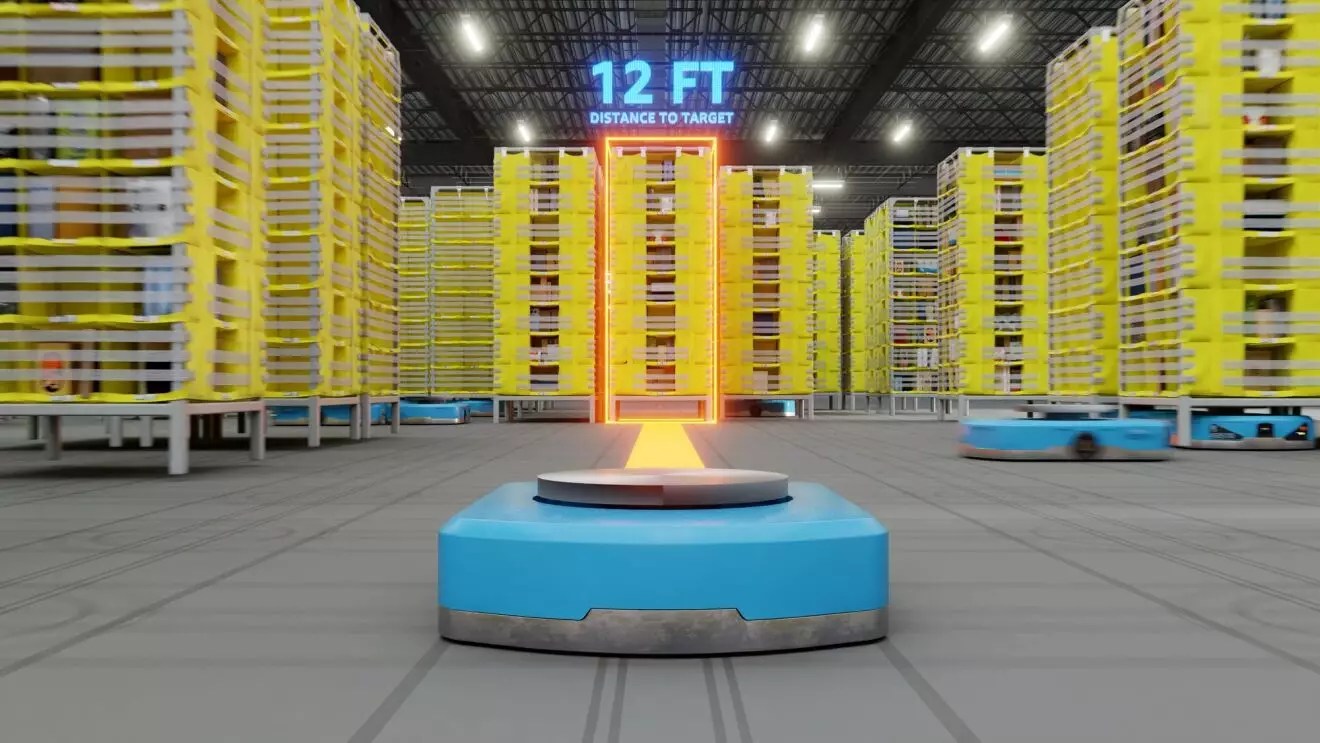In recent years, Amazon has surged ahead as a pioneer in integrating robotics into its operational backbone. The deployment of over one million autonomous machines marks a historic milestone that signals more than just technological progress; it signals a fundamental transformation of how we perceive work and efficiency. Unlike traditional warehouses where human labor dictated pace, Amazon’s automation strategy emphasizes speed, scalability, and a relentless quest for cost reduction. This shift challenges preconceived notions about jobs and raises questions about the future landscape of employment. Automation, in Amazon’s vision, is not merely an enhancement but a reinvention—shifting human effort from manual, repetitive tasks to roles centered on oversight, strategy, and problem-solving.
Intelligence Beyond Mechanics: The Rise of Smarter Robots
What sets Amazon’s robotic rollout apart isn’t solely its sheer volume but the sophistication infused into each machine. The company’s latest AI backbone, dubbed DeepFleet, is engineered to create a synchronized, intelligent fleet that adapts and evolves. The promise of a 10% improvement in travel time and faster deliveries underscores a broader trend: robots are no longer simple mechanical laborers but integrated, learning entities. The recently unveiled Vulcan exemplifies this leap—equipped with dual arms, cameras, and “touch” sensors, it signifies a new era where robots mimic human dexterity and perceptiveness. While some skeptics might argue this levies a dystopian shadow, the truth is that such advancements catalyze efficiency and could potentially elevate human roles from mundane chores to higher-value tasks. Yet, this reliance on AI and machine learning warrants a cautious approach—failure or misjudgment could lead to systemic disruptions or ethical dilemmas we are barely beginning to grasp.
Human Workers: From Replacements to Reinforcements
The commonly held fear that robots will permanently displace human workers often overlooks the nuanced reality of workplace evolution. The Wall Street Journal reports that many employees find themselves moving into more complex oversight roles—positions that are often better compensated and less physically taxing. Neisha Cruz’s experience exemplifies this transition: initially engaged in heavy lifting and pick-and-pack tasks, she has now become a robotic process overseer, earning significantly more. This suggests that automation, rather than eliminating jobs, can transform them into more skillful, better-remunerated careers. However, this transition isn’t universally seamless; it presupposes access to training, education, and opportunities that may not be equally available to all workers. Critics argue that the economic gains are uneven and that many low-skilled roles are simply eliminated without adequate alternative employment options. The long-term impact hinges on whether society can effectively retrain displaced workers and integrate human labor into new domains created by these technological shifts.
The Double-Edged Sword of Unprecedented Scale
The magnitude of Amazon’s robotic deployment is staggering—processing billions of packages annually—yet it poses profound questions about sustainability, societal impact, and ethical boundaries. These numbers, almost incomprehensible in scale, hint at a future where automation facilitates hyper-efficiency, but at what cost? Will this level of omnipresent automation foster a more equitable supply chain, or will it deepen economic divides and job insecurity? Furthermore, the environmental footprint of manufacturing, deploying, and maintaining such a vast autonomous fleet is a critical issue left largely unexamined in corporate narratives. The promise of lower costs and faster deliveries is alluring, but society must grapple with broader implications—automation’s environmental costs, data security concerns, and potential monopolistic tendencies of tech giants like Amazon. As the pace accelerates, the critical challenge is to harness this technological revolution for inclusive and sustainable growth rather than unchecked corporate dominance.
Future Horizons: A World Reinvented by Robots
Looking ahead, the trajectory appears clear: automation will continue to reshape industries, redefining work, productivity, and consumer experience. Amazon’s bold investment signals that the era of robot-centric logistics is just beginning—not as a dystopian nightmare but as an opportunity for innovation, efficiency, and potentially improved human quality of life. However, a cautious yet optimistic perspective recognizes that technology is neither inherently good nor evil; its impact depends entirely on how we choose to implement and govern it. Society must prioritize ethical considerations, worker protections, and environmental sustainability as automation becomes more ingrained. We are approaching a pivotal moment where the collaboration between human ingenuity and machine intelligence could forge a future that benefits all, provided there is mindful oversight and proactive adaptation. In this unfolding landscape, the most powerful strategy is to view automation not merely as a threat, but as a catalyst for transformative progress—if wielded with foresight and responsibility.


Leave a Reply